Koji Ishibashi
Optimization and Characterization of Near-Field Beams with Uniform Linear Arrays
Mar 18, 2025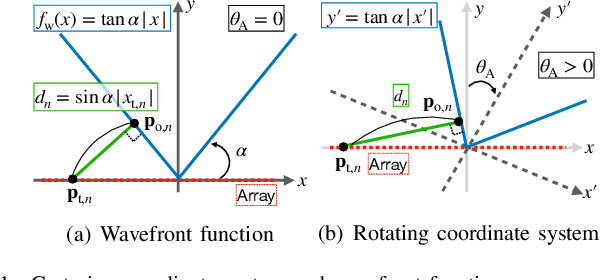
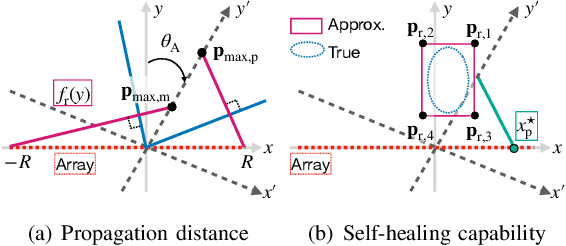

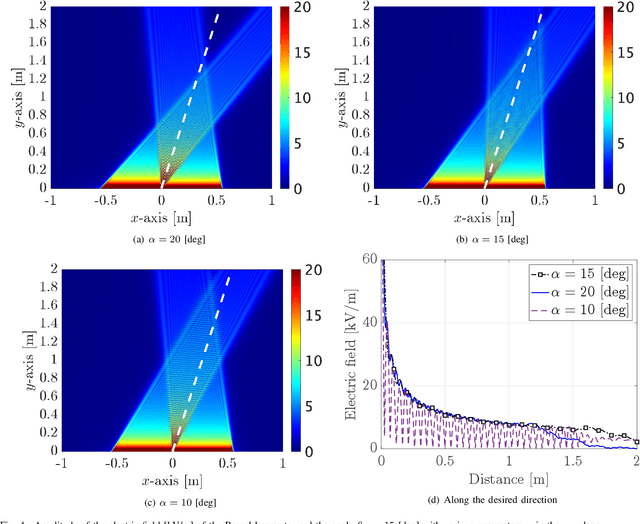
Abstract:In this paper, we consider near-field beams that can mitigate signal attenuation and blockage effects using a uniform linear array (ULA). In particular, closed-form expressions for phase distributions in a ULA are derived to generate Bessel beams and curving beams based on the desired propagation directions and trajectories. Based on the phase distributions, the maximum steering angle and propagation distance of Bessel beams with a ULA are revealed. In addition, from the sampling theorem in the spatial domain, the requirements for ULAs to properly generate Bessel beams are clarified. For curving beams, trajectories to reach a user while avoiding one obstacle are designed via the Lagrangian method. Numerical results obtained by electromagnetic wave simulations confirm the effectiveness of the analyses for Bessel beams and the curving beam designs. Furthermore, the characteristics of Gaussian beams, beamfocusing, Bessel beams, and curving beams are summarized in terms of the statistical behavior of their intensity and signal processing.
Revisiting Beamforming Design for Stable Millimeter-Wave Communications Under Blockages
Mar 07, 2025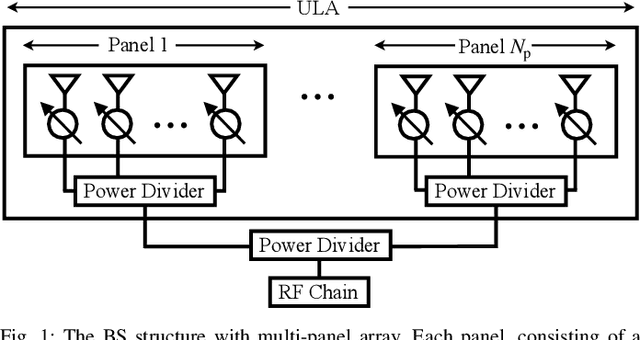
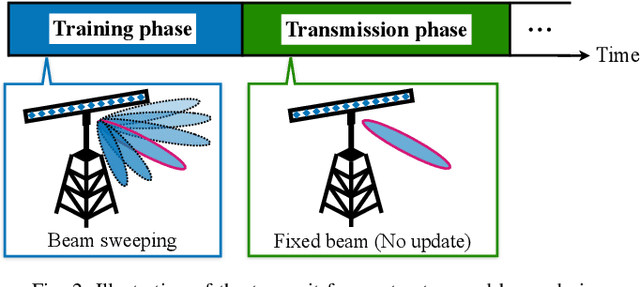

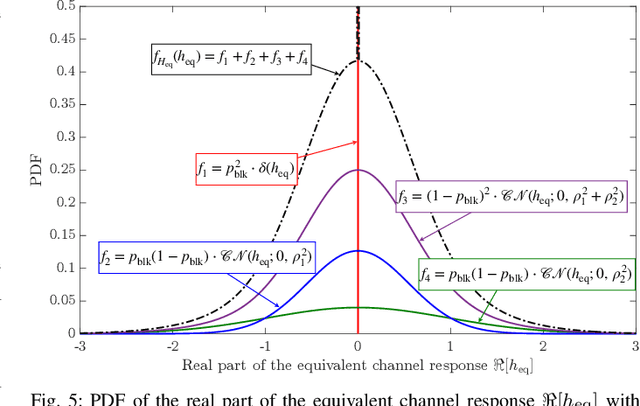
Abstract:This study examines analog beamforming designs utilizing multi-panel arrays for millimeter-wave (mmWave) communication systems under stochastic path blockages where each panel is an integrated circuit that includes power amplifiers, a limited number of antenna elements, and the corresponding phase shifters. In existing commercial mmWave systems, analog beams are typically designed by leveraging all panels cooperatively to align with the line-of-sight (LoS) path, thereby maximizing array gain. Although this beam design is effective in static channels, it is highly susceptible to frequent link disconnections caused by sudden path blockages. To address this challenge, the present study revisits the design of analog beamforming and proposes a multi-beam approach using multi-panel arrays to enhance robustness to path blockages. To evaluate the performance of the multi-beam with multimodal directivity, a theoretical analysis of the outage probability of the spectral efficiency (SE) is conducted. To design the optimal multi-beam based on the derived outage probability, we formulate a panel allocation problem to determine the assignment of panels to specific paths, including both LoS and non-line-of-sight (NLoS) paths. Numerical simulations confirm that the optimal beam, at high target SE, comprises a single sharp beam aligned to the LoS path to maximize array gain, whereas the optimal beam at low target SE is a multi-beam aligned to both the LoS and NLoS paths to acquire spatial diversity. These results demonstrate that the proposed multi-beam design, which utilizes multiple paths, effectively enhances the stability of mmWave communications while ensuring a minimum required performance level.
Adaptively Weighted Averaging Over-the-Air Computation and Its Application to Distributed Gaussian Process Regression
Jan 29, 2025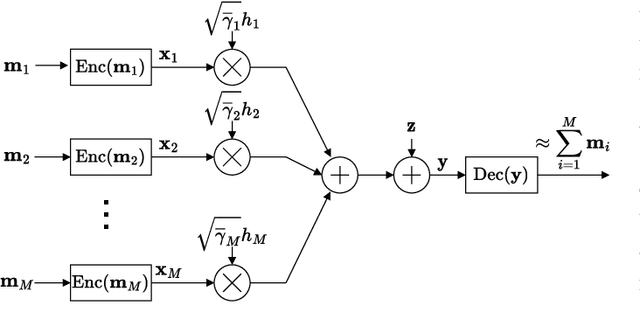
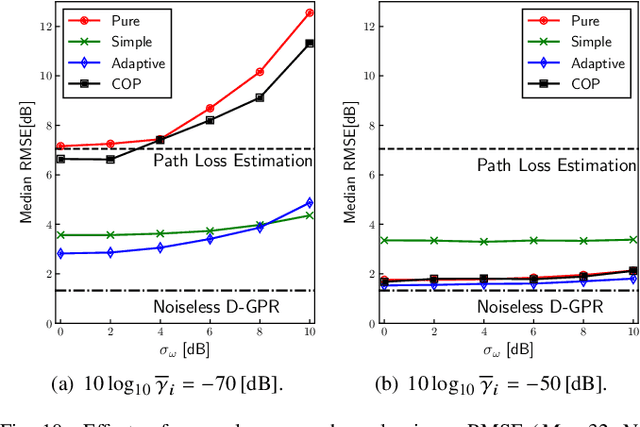
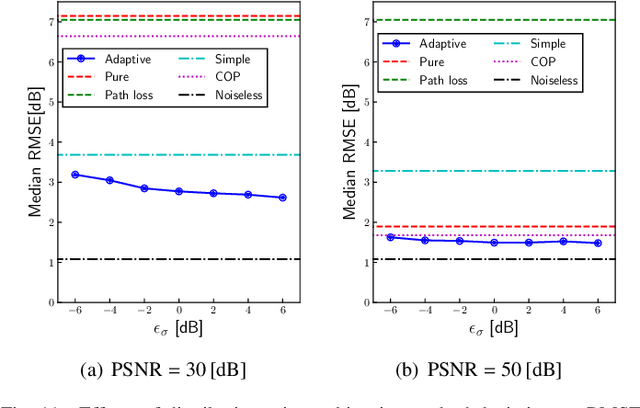
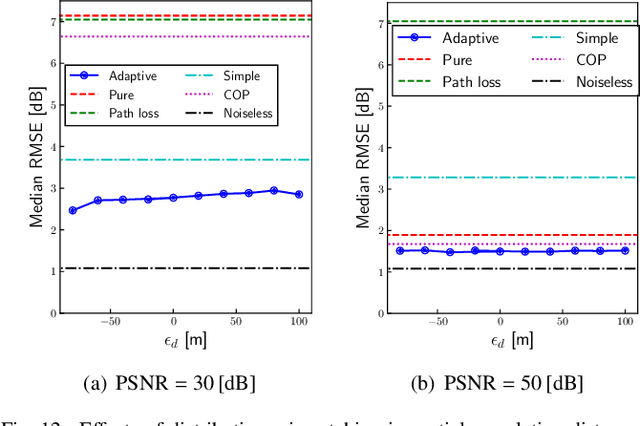
Abstract:This paper introduces a noise-tolerant computing method for over-the-air computation (AirComp) aimed at weighted averaging, which is critical in various Internet of Things (IoT) applications such as environmental monitoring. Traditional AirComp approaches, while efficient, suffer significantly in accuracy due to noise enhancement in the normalization by the sum of weights. Our proposed method allows nodes to adaptively truncate their weights based on the channel conditions, thereby enhancing noise tolerance. Applied to distributed Gaussian process regression, the method facilitates low-latency, low-complexity, and high-accuracy distributed regression across a range of signal-to-noise ratios. We evaluate the performance of the proposed method in a radio map construction problem, which is a task for visualizing the radio environment based on limited sensing information and spatial interpolation. Numerical results demonstrate that our approach not only maintains computational accuracy in high noise scenarios but also achieves performance close to ideal conditions in high SNR environments. This advancement holds significant implications for the deployment of real-time, large-scale IoT systems, providing a scalable solution to enhance reliability and efficiency in data-driven environmental monitoring.
Channel Estimation for Hybrid MIMO Systems With Array Model Errors and Beam Squint Effects
Dec 04, 2024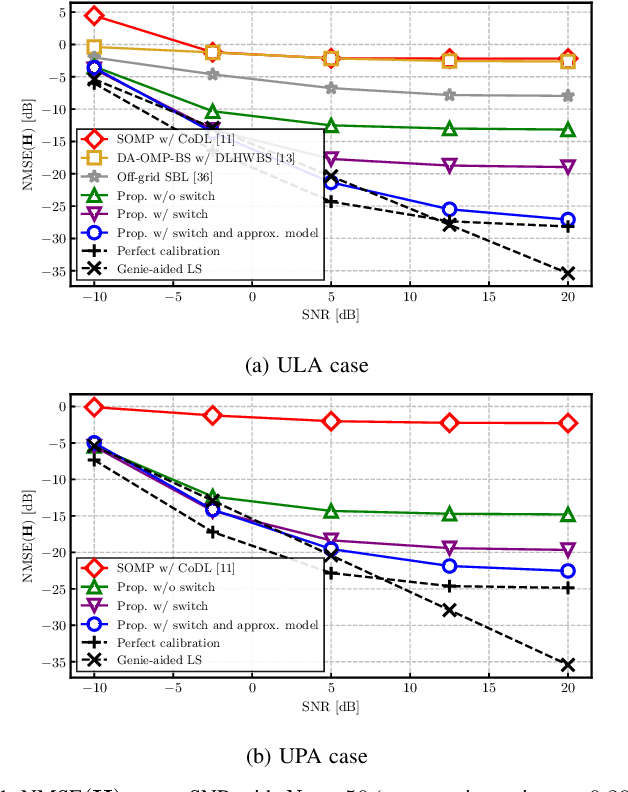



Abstract:This paper proposes a channel estimation method for hybrid wideband multiple-input-multiple-output (MIMO) systems in high-frequency bands, including millimeter-wave (mmWave) and sub-terahertz (sub-THz), in the presence of beam squint effects and array errors arising from hardware impairments and environmental time fluctuations such as thermal effects and dynamic motion of the array. Although conventional channel estimation methods calibrate array errors through offline operation with large training pilots, the calibration errors remain due to time-varying array errors. Therefore, the proposed channel estimation method calibrates array errors online with small pilot overhead. In the proposed method, array response matrices are explicitly decomposed into a small number of physical parameters including path gains, angles and array errors, which are iteratively estimated by alternating optimization based on a maximum likelihood (ML) criterion. To enhance the convergence performance, we introduce a switching mechanism from an ongrid algorithm to an off-gird algorithm depending on the estimation accuracy of the array error during algorithmic iterations. Furthermore, we introduce an approximate mutual coupling model to reduce the number of parameters. The reduction of parameters not only lowers computational complexity but also mitigates overfitting to noisy observations. Numerical simulations demonstrate that the proposed method effectively works online even with small pilot overhead in the presence of array errors.
Joint Channel and Data Estimation for Multiuser Extremely Large-Scale MIMO Systems
Jun 27, 2024Abstract:This paper proposes a joint channel and data estimation (JCDE) algorithm for uplink multiuser extremely large-scale multiple-input-multiple-output (XL-MIMO) systems. The initial channel estimation is formulated as a sparse reconstruction problem based on the angle and distance sparsity under the near-field propagation condition. This problem is solved using non-orthogonal pilots through an efficient low complexity two-stage compressed sensing algorithm. Furthermore, the initial channel estimates are refined by employing a JCDE framework driven by both non-orthogonal pilots and estimated data. The JCDE problem is solved by sequential expectation propagation (EP) algorithms, where the channel and data are alternately updated in an iterative manner. In the channel estimation phase, integrating Bayesian inference with a model-based deterministic approach provides precise estimations to effectively exploit the near-field characteristics in the beam-domain. In the data estimation phase, a linear minimum mean square error (LMMSE)-based filter is designed at each sub-array to address the correlation due to energy leakage in the beam-domain arising from the near-field effects. Numerical simulations reveal that the proposed initial channel estimation and JCDE algorithm outperforms the state-ofthe-art approaches in terms of channel estimation, data detection, and computational complexity.
A New Noncoherent Gaussian Signaling Scheme for Low Probability of Detection Communications
Jan 08, 2023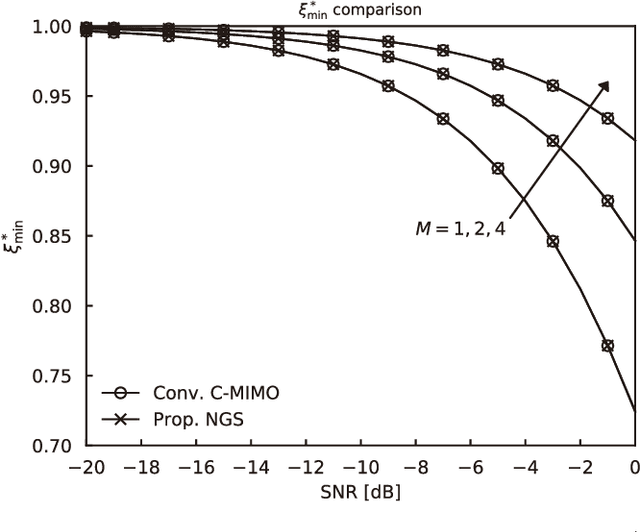
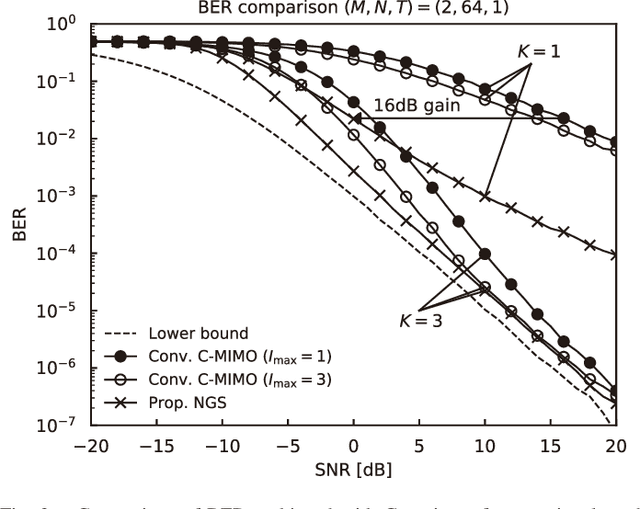
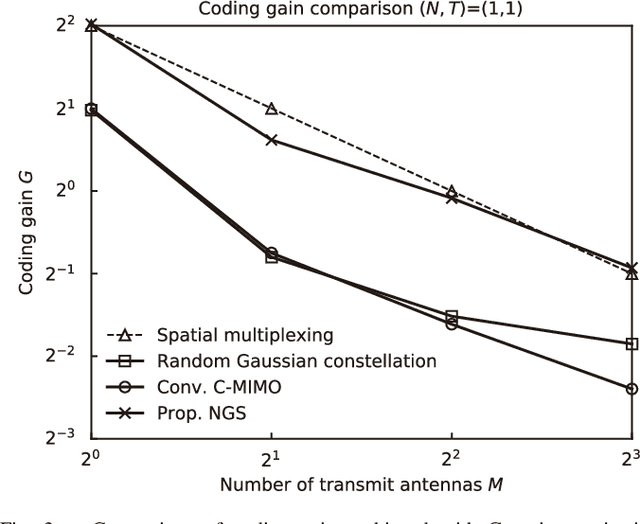

Abstract:We propose a novel, Gaussian signaling mechanism for low probability of detection (LPD) communication systems with either single or multiple antennas. The new scheme is designed to allow the noncoherent detection of Gaussian-distributed signals, enabling LPD communications using signals that follow the complex Gaussian distribution in the time and frequency domains. It is demonstrated via simulations that the proposed scheme achieves better performance than a comparable conventional scheme over the entire SNR region, with the advantage becoming more significant in scenarios with lower overhead.
* 5 pages, 3 figures
Noncoherent Massive MIMO with Embedded One-Way Function Physical Layer Security
Feb 24, 2022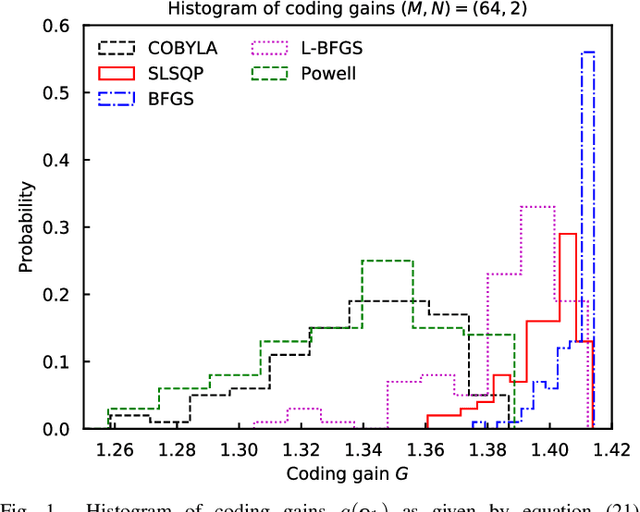
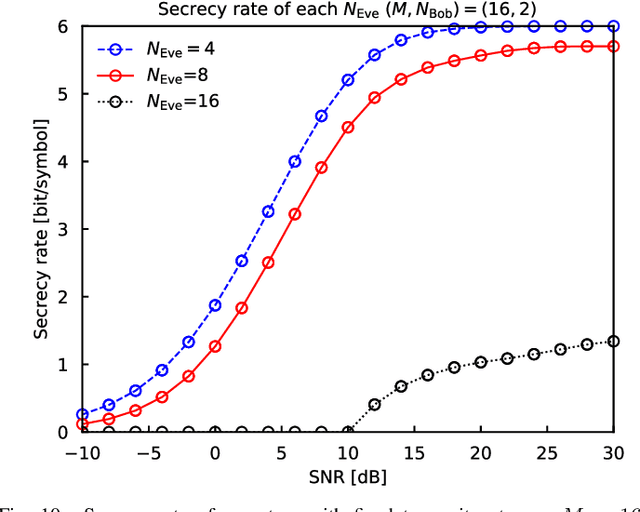

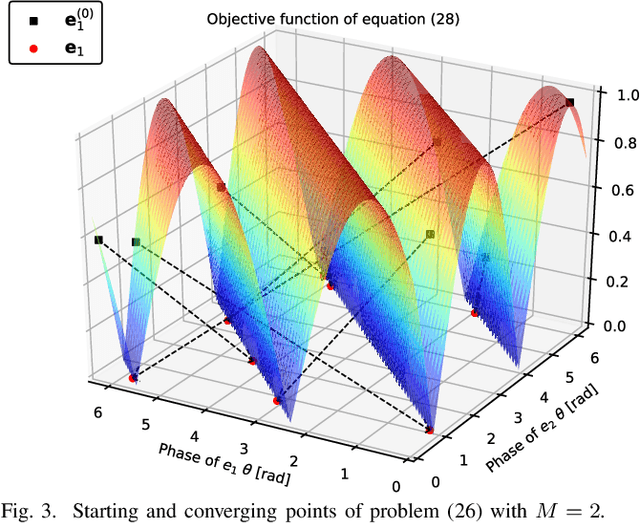
Abstract:We propose a novel physical layer security scheme that exploits an optimization method as a one-way function. The proposed scheme builds on nonsquare differential multiple-input multiple-output (MIMO), which is capable of noncoherent detection even in massive MIMO scenarios and thus resilient against risky pilot insertion and pilot contamination attacks. In contrast to conventional nonsquare differential MIMO schemes, which require space-time projection matrices designed via highly complex, discrete, and combinatorial optimization, the proposed scheme utilizes projection matrices constructed via low-complexity continuous optimization designed to maximize the coding gain of the system. Furthermore, using a secret key generated from the true randomness nature of the wireless channel as an initial value, the proposed continuous optimization-based projection matrix construction method becomes a one way-function (in a cryptographic sense), making the proposed scheme a physical layer secure differential MIMO system. An attack algorithm to challenge the proposed scheme is also devised, which demonstrate that the security level achieved improves as the number of transmit antennas increases, even in an environment where the eavesdropper can perfectly estimate channel coefficients and experiences asymptotically large signal-to-noise ratios.
 Add to Chrome
Add to Chrome Add to Firefox
Add to Firefox Add to Edge
Add to Edge